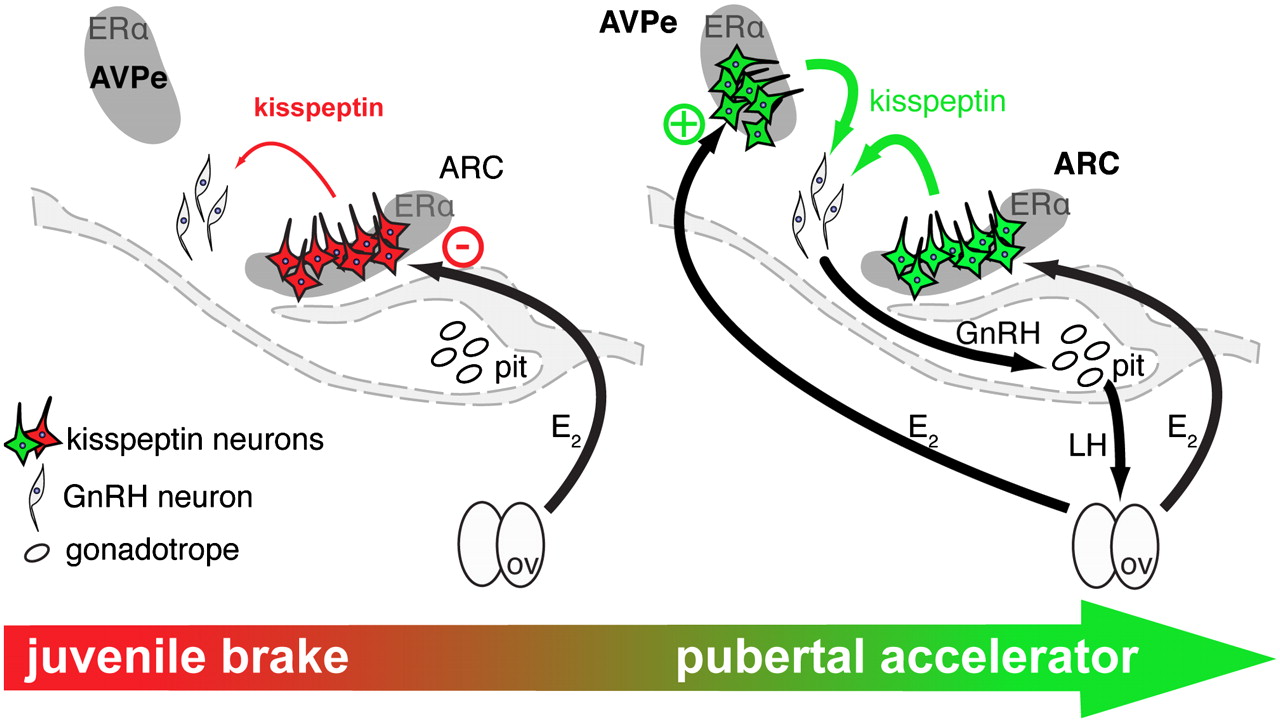Biology of Reproduction, lecture on Lactation
XXV. Lactation
A. Postpartum Endocrine Changes
1. expulsion of the placenta ® ¯ E+P
a. Ý E+P late in pregnancy ® stimulates mammary growth
i. Ý E+P ® suppress PrL
ii.¯ E+P allows PrL to stimulate mammary alveoli
b. postpartum depression
i. Ý E ® Ý 5-HT \ ¯ E may ® ¯ 5-HT ® depression
B. PrL ® stimulates primed (E+P) mammary tissue
to secrete milk
1. PrL under tonic inhibitory control by DA (PRIH)
a. endocrine DA made in hypothalamus
i. DA is inhibited by 5-HT
2. PRH(s) include VIP, TRH
a. 5-HT, TRH, & VIP stimulate PrL release
i. E2 stimulates 5-HT & TRH
ii. PrL released in short pulses
(1) most abundant during sleep
3. suckling inhibits DA (and stimulates VIP, TRH)
a. plasma PrLÝ 2-20X within 30 min of suckling
b. suckling also inhibits GnRH, LH, FSH
i. ovarian recrudescence inhibited
(1) PrL inhibits LH + FSH action at ovaries
(a) nursing every ~15 min
(as !Kung people do) acts as a contraceptive
for avg.= 44.1 months
C. Neuroendocrine Reflex
1. sensory neural feedback stimulates/inhibits
hypothalamic/neurohypophysial hormones
a. labor (cervical engagement) ®Ý Oxy
b. suckling ® ¯ DA, but Ý PRHs and Oxy
D. Milk Ejection Reflex (letdown)
1. suckling stimulates sensory afferents
which stimulate neurohypophysial Oxy
2. Oxy stimulates mammary alveolar myoepithelium contraction
3. milk is forceably moved toward the nipple
4. stress ® Ý Epi & NE ® blood vessel
constriction ® ¯ Oxy delivery to myoepithelium ® ¯milk
E. Advantages of Breast-feeding
1. nutritionally complete
2. enhanced immune function
a. colostrum (secreted prior to milk) and milk contain antibodies
b. lactoferrin binds iron and prevents bacteria
from multiplying
c. allergic reactions are fewer in breast-fed babies
d. middle ear infections are reduced
e. breast-feeding enhances immune function in proportion
to the duration of nursing
i. longer breast-feeding = more immune capacity
3. Neural/Behavioral Development
a. recent studies demonstrate that touch:
i. reduces stress response
(1) reduces hypertension
ii. completes circuitries for adult behavior
iii. reduces probability of aberrant behavior
4. reduces atherosclerosis and obesity
a. decreases the chance of type I diabetes and SIDS
5. human milk contains regulatory biochemicals
a. EGFs, GnRH, 5-HT, sleep inducing peptide
6. Oxy (from milk ejection reflex) causes uterus to
contract back to normal size and facilitates postpartum
recovery
F. Milk transfers alcohol and drugs ingested by the mother
to the fetus
1. weight/dosage dependent effects
a. a small amount of alcohol, caffeine, nicotine,
THC, cocaine etc. for an adult is a very large
amount for an infant
